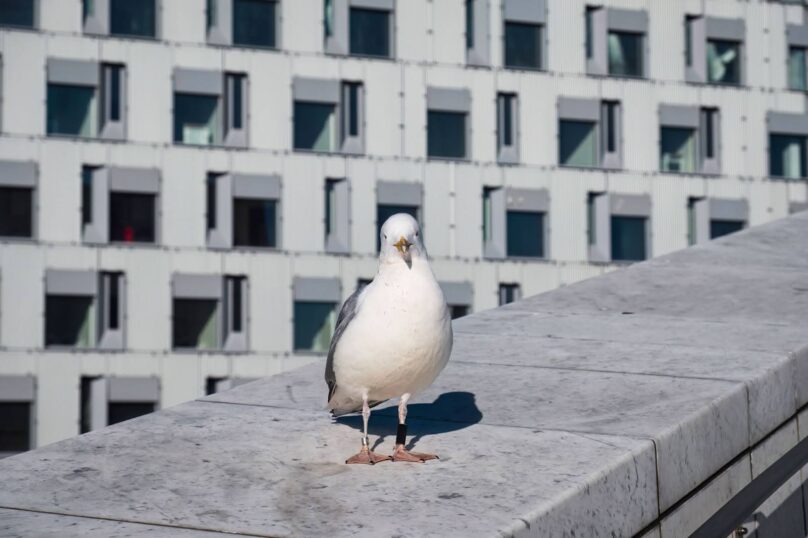
What Sets Modern Pest Control Apart From Traditional Methods?
Bird issues have altered how people perceive pest control. Pigeons nesting in beams, sparrows roosting in signage, and seagulls swarming rooftops have become costly concerns. Commercial buildings, warehouses, and food facilities can’t afford to treat bird problems lightly. These pests bring health risks, damage infrastructure, and disrupt daily operations. Businesses now turn to modern pest control strategies focused on bird management that work smarter, not harder.
Why Modern Pest Control for Birds is a Wiser Choice
Bird infestations often seem like a minor inconvenience until costs pile up. Modern pest control offers a more strategic and budget-friendly approach to addressing the issue. It’s about health, safety, and financial protection, not just aesthetics.
Damages From Birds Can Be Extensive
Droppings eat through paint, stain signage, and ruin equipment. Nesting materials clog ventilation and drainage. Repairs often cost more than prevention. Businesses also risk reputation loss if customers see unsanitary conditions. Acting early avoids those hidden costs.
Strategic Installations Have Long-Term Value
Bird deterrents, such as nets or spikes, don’t require daily attention. Once installed and maintained, they provide consistent results. That saves the workforce and minimizes disruptions. Over months and years, this turns into real savings. It’s a more innovative way to protect assets.

Why Modern Pest Control for Birds Beats Traditional Ways
Old solutions can no longer keep pace with how birds behave today. Businesses need strategies that not only scare birds off but also prevent them from returning. Modern pest control does more than react; it prevents, protects, and lasts. Here’s how this new approach changes everything.
Targets Root Causes
Bird infestations aren’t random; they’re driven by location, food, and shelter. Effective bird management means understanding why birds return to a site. Traditional responses often push birds away temporarily without addressing the underlying issue. Modern pest control aims to remove the attraction, not just the birds.
Old-School Methods Often Relocate the Problem
Basic deterrents like scarecrows, fake owls, or noise makers might work for a day or two. Birds quickly adapt, especially pigeons and sparrows. These approaches don’t deal with roosting spots, open entry points, or nesting behavior. The result is a temporary fix that pushes birds from one ledge to another. Businesses spend more on reacting than on preventing.
Bird Management Today Uses Strategic Deterrents
Modern pest control takes a holistic approach. Specialists study the birds’ behavior, the building’s structure, and activity patterns. Then, they install bird netting, spikes, or tension wire systems where birds land or roost. These interventions remove the incentive to return. Instead of chasing birds away, experts reshape the space so birds lose interest.
Uses Smart Tools
Bird activity isn’t random; it follows repeatable cycles. Modern bird control uses tools that track patterns and highlight high-risk zones. By combining inspections with analytics, providers create more efficient and targeted control plans. That saves money and reduces disruption.
Monitoring Identifies Patterns Before Damage Grows
Bird problems often start small. One pigeon becomes a dozen within weeks. Nesting materials clog gutters, and droppings corrode surfaces. With digital monitoring, experts log where birds perch, when they arrive, and what draws them. These insights help map out control zones. Preventive action follows before the issue spreads.
Drones and Imaging Aid in Site Assessment
Inspecting large buildings or rooftops can be a challenging task. Drones provide safe, high-resolution views of ledges, vents, and signs where birds gather. Thermal imaging highlights hidden nests or high-activity zones. This visual data reduces guesswork and enables teams to act quickly. Inspections become faster, safer, and more accurate.
Long-Term Mapping Improves ROI
Businesses that use mapped reports over time see clearer returns. The data helps track pest pressure, peak seasons, and the success of treatments. Modern bird control firms provide records for health inspections or insurance claims. These reports also guide budgeting and capital improvement plans. Knowledge builds a better strategy.
Prioritizes Health & Environmental Safety
Birds may seem harmless, but their droppings carry pathogens. Traditional removal efforts often stirred up debris or created cleanup hazards. Modern bird control reduces those risks through safer practices. The goal is always to protect people, property, and non-target animals.
Humane Bird Control is the New Standard
Modern pest control never harms birds. Traps and poisons are outdated and rarely used in urban settings. Instead, companies use exclusion techniques, such as netting or deterrents, that don’t cause injury. Products meet humane standards and follow local wildlife regulations. That makes the work both responsible and compliant.
Bird Droppings Pose Real Health Risks
Pigeon and seagull droppings contain bacteria, fungi, and parasites. Histoplasmosis and Salmonella are just two examples. When droppings dry, spores become airborne and enter the ventilation system. Modern bird control methods reduce contact through the use of barriers and routine cleaning. It protects not just the building but everyone inside.
Safe Products and Cleanup Procedures Matter
Special cleaning agents now break down acidic droppings without damaging surfaces. HEPA filters and protective gear reduce risks during cleanup. Teams often seal access points immediately after cleaning to prevent birds from returning. That makes one-time cleanups more effective. The process is thorough, discreet, and controlled.
Offers Proactive & Preventive Solutions
Waiting for a bird infestation to spiral out of control costs time and money. Seagulls nesting on rooftops or sparrows in signage leave messes behind. Modern solutions prioritize prevention, keeping birds from arriving or returning to the area. This proactive shift saves long-term expenses and maintains business operations.
Bird Spikes and Netting Offer Physical Barriers
Bird spikes deter pigeons and seagulls from perching on beams, signs, and sills. They don’t hurt the birds; they make landing uncomfortable. Bird netting seals off entire roof areas or warehouses, blocking entry. These options create no-fly zones without affecting aesthetics. When installed correctly, they last for years.
Maintenance Schedules Keep Risks Low
After deterrents are installed, experts conduct regular inspections to ensure their effectiveness. They check for signs of bird activity, damage, or wear. Maintenance includes re-tightening wires, replacing damaged netting, or cleaning droppings. It keeps systems effective and protects investments. Clients get peace of mind from ongoing support.
Sanitation and Landscaping Also Help Prevent Birds
Birds are drawn to trash bins, spilled grains, or leftover food. Adjusting waste management, trimming trees, and sealing vents all support deterrent systems. Property managers now work with pest control teams to improve their surroundings. This collaborative method creates lasting bird-free zones.
Professionalism and Regulation Are Now a Standard
Modern pest control isn’t a side job; it’s a regulated service industry. Especially in bird management, expertise in structural work, safety, and compliance is required. Businesses now expect specialists to be trained, transparent, and responsive.
Certified Installers Handle Bird Deterrents
Installing bird netting or spikes involves working at heights and in close proximity to sensitive areas. Only licensed professionals should handle these systems. Certified teams carry the right tools, harnesses, and permits. They ensure the job meets industry standards and safety codes. It protects both the property and the workers.
Clean Documentation Helps With Audits and Compliance
Modern firms provide detailed before-and-after photos, service logs, and maps to document their work. Food facilities or warehouses often require these for audits or inspections. Having clean records builds trust with clients and regulators. It also demonstrates due diligence in the event that issues arise. Documentation is no longer optional; it’s expected.

Customer Experience is Central
Clients don’t just want a service; they want results, along with effective communication. Whether it’s a food business or an office building, they expect updates, clarity, and reliability. Modern pest control has adjusted to meet these expectations.
Consultations Help Clients Understand the Process
Professionals explain not just what’s being done but why. They walk clients through deterrent options, such as spikes, netting, or visual repellents. Each plan is customized to the layout, budget, and type of birds involved. When clients understand the logic, they’re more confident in the results. That partnership builds trust.
Support Teams Stay in Touch After the Job
After installation, providers follow up through calls or site visits. They check if birds have returned, review wear and tear, or suggest upgrades. Some use software to automate reminders or reports. This ongoing communication helps clients stay ahead of the curve. It turns one-time service into long-term protection.
Adapts to Industry Needs
Bird problems don’t affect all businesses equally. A warehouse, a food plant, and a retail plaza each face unique risks. That’s why modern pest control strategies are not one-size-fits-all. Specialists now tailor bird deterrent plans based on how and where a business operates.
Food Facilities Require Strict Contamination Control
Food manufacturing and processing sites are under constant pressure to maintain high standards of hygiene. Birds bring droppings, feathers, and parasites into sensitive zones. Even brief exposure can trigger failed audits or safety violations. Modern pest control utilizes exclusion tools, such as netting and screens, to seal loading docks and storage areas. This proactive approach protects product integrity and ensures regulatory compliance.
Warehouses Must Protect Inventory and Infrastructure
Large open spaces and high ceilings attract pigeons and sparrows seeking shelter. Over time, droppings damage packaging and warehouse floors. Nesting debris can block drains or ventilation. Modern pest control uses bird spikes on beams, audio deterrents in rafters, and regular inspections to catch early signs of activity. It maintains the facility’s cleanliness, compliance, and operational efficiency.
Retail and Hospitality Centers Prioritize Guest Experience
Bird infestations in shopping centers, cafes, or hotels can drive customers away. Visible nests, droppings, or noisy flocks hurt a brand’s image. Businesses need discreet yet practical solutions. Today’s pest control teams install clear polycarbonate spikes, low-profile netting, or optical gels that are barely noticeable. These tools keep spaces clean while preserving aesthetic appeal.
Aviation Zones Require Flight-Safe Bird Management
Seagulls and other large birds near airstrips can cause flight hazards. Even small flocks pose a threat during takeoff and landing. Modern pest control utilizes falconry, sound deterrents, and habitat modification to reduce bird pressure in a safe and effective manner. Aviation guidelines plan these methods to minimize interference. It’s a high-stakes environment where precision control is critical.
Protect Your Property With Modern Pest Control for Birds
The longer birds stay, the deeper the damage goes, from corroded structures to failed inspections. Modern pest control for birds reclaims your space with more innovative, safer solutions that work in the long term. When your rooflines, signage, or vents become nesting zones, it becomes a threat to your operations. Don’t leave your property vulnerable; instead, work with those who know how to keep it protected.
Stay ahead of bird problems with proven tips from the Elite Bird Management blog.




